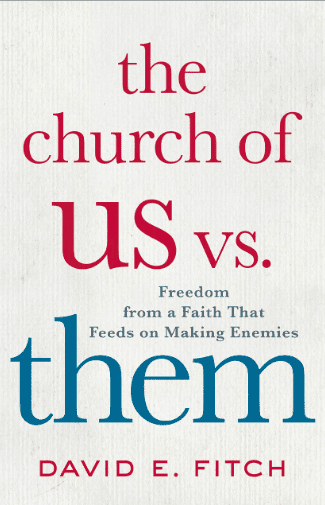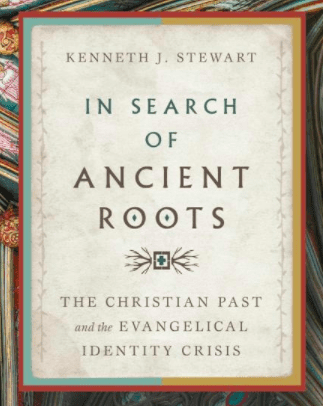Some people want to reclaim a supposed original meaning for the world “evangelical.” Lillian Kwon, at CP, recently wrote up a story about a rant by someone who says evangelical is basically a kind of Reformation theology, and the rant included pointing fingers of compromise at Carl Henry and Christianity Today, a magazine he evidently doesn’t read carefully and a theologian whom he must be ignoring, but his rant does raise an issue many care about: What is evangelicalism and who gets to define it? Before we get to that question, a clip of the CP piece:
More specifically speaking, it’s someone who believes the Gospel is centered on the doctrine of justification by faith and the principles of sola fide (by faith alone) and sola scriptura (by Scripture alone), he added. “The Gospel is a message about redemption, it’s a call to repentance from sin … and a summons to yield to the Lordship of Christ.”
Abuse of the term “evangelical” is not new. Nineteenth century preacher Charles Spurgeon had decried the fact that the modernists of his day wanted to be called evangelicals even though they abandoned all the evangelical principles, according to Johnson. Such a label would give them “instant credibility” and easy access to people who believed the Bible, he said.
Johnson, who serves as an elder at Grace Community Church, also believes the magazine Christianity Today has had a negative impact on how “evangelical” is defined today.
“The abuse of the term evangelicalism and the corruption of the evangelical movement really started, I think, with a core of people who included the founder of Christianity Today who wanted a new kind of evangelicalism and that was their term – new evangelicalism,” Johnson said on the radio show.
“They wanted to do away with certain evangelical distinctives and embrace a kind of ecumenical diversity instead. And slowly and gradually that’s what they did. My argument would be today, these days, you could read Christianity Today, you barely will find any actual theological evangelicalism in the magazine at all,” he added.
Johnson also listed the emerging church and the seeker sensitive movements as contributing to the murkiness of evangelicalism.
But what he has found more disturbing is how politicized the term has become over the last few decades.
 Defining “evangelical” has become somewhat of a game, but it all comes down to who defines it and why. This piece wants evangelicalism to be old-fashioned fundamentalism, the kind that pre-Carl Henry and pre-neo-evangelicalism’s coalition and pre-John Stott. But more disconcerting perhaps is the deliberate ignoring of the important work of the best historians of evangelicalism: Mark Noll and David Bebbington, both of whom embrace a four-fold characteristics of evangelicalism: crucicentrism, biblicism, conversionism, and activism. Evangelicalism isn’t so much a doctrinal statement as it is a movement and one can legitimately call it “variations on the gospel theme.”
Defining “evangelical” has become somewhat of a game, but it all comes down to who defines it and why. This piece wants evangelicalism to be old-fashioned fundamentalism, the kind that pre-Carl Henry and pre-neo-evangelicalism’s coalition and pre-John Stott. But more disconcerting perhaps is the deliberate ignoring of the important work of the best historians of evangelicalism: Mark Noll and David Bebbington, both of whom embrace a four-fold characteristics of evangelicalism: crucicentrism, biblicism, conversionism, and activism. Evangelicalism isn’t so much a doctrinal statement as it is a movement and one can legitimately call it “variations on the gospel theme.”
Which leads me to discuss the evangelicals who did get left behind in the rise of the Moral Majority, those whom David Swartz calls the “moral minority” in his new book Moral Minority. Their story, which I’ve told in two parts (here and here), depresses me as the story of squandering potential for reformation and revival. Ron Sider was at the top of his game and the hope was high in 1973 but by 1975 the coalition of progressive evangelicalism was torn to shreds into separate identity groups. I emerged theologically in the days of this hope.
The best book I’ve read this year.
What do you think can unite evangelicalism? Is it unifiable at all? From where I sit these days, is say No. What say you?
Instead of reformation and revival, the moral minority devolved into identity politics. In the heat of the civil rights movement, black evangelicalism was realized by significant black leaders to be a form of white evangelicalism rather than genuine black Christian faith. As Swartz summarizes it: “The impulse by early black leaders to create an integrated evangelical community lost momentum as a younger generation embraced racial separatism” (190). The principal voices here are those of John Perkins, Charles Marsh, William Bentley, Columbus Salley, Clarence Hilliard and others like Wyn Wright Potter.
Female evangelical feminists discovered the moral minority was a new version of male-led evangelicalism, and they often pointed to the lack of interest in the ERA (Equal Rights Amendment). A significant protesting voice was Evon Bachaus and she asked for 50% representation in the meetings. Evangelical feminism in the early 1970s was undeveloped and unorganized. Others included Letha Scanzoni, Nancy Hardesty, Lucilled Dayton, Virginia Mollenkott, and Neta Jackson. Inclusive language was already being seen as a formidable issue. ERA support was part of their activism. Then there arose women’s ordination. But many in the progressive group did not support it. They, like the disenfranchised blacks, began to form their own movement — the Evangelical Women’s Caucus. Don Dayton showed an alternative history to American evangelicalism, one in which women played major roles.
Theology broke the unity down as well. This was a coalition, not a theological party. The Reformed and the Anabaptist and black evangelicals and Calvinists and “non-aligned denominations” and churches and leaders. So Yoder came into conflict with Stephen Mott and Rich Mouw. Robert Webber proposed greater senses of unity that brought the coalition together, but his “plea failed spectacularly” (206). Wallis exited; Bentley left. It became a Babel of identity voices. The Anabaptists formed Evangelical for Social Action and the more radicals into Sojourners. More of the Reformed opted for the Association for Public Justice. And others went in other directions.
The Moral Minority became the minority when the Moral Majority became the majority. That happened in the late 1970s and 1980s when the Democratic Party became pervasively more “secular” and the Republican party appealed to evangelicals of a more conservative order. While the evangelical left had hope under Carter, he did not side enough with the conservative Christian Democrat and Reagan played the right cards… and by the end of the 80s the parties were ideologically rigid and divided. Identity politics sent the Democrats themselves into some tailspins but by the time Clinton’s years were over the Moral Minority was politically ineffective.
One cannot say the same today; while the numbers of evangelicals who are progressive remains low, the younger evangelicals offer to some of the progressive leaders some hope for engaging the political forum with a more robust evangelical progressive politics. I have little confidence in the evangelical political left’s longterm impact on evangelicalism or politics. It has shifted from an identity politics to social justice, but until the evangelical left can put forward a compelling economic theory alongside its appeal to care for the poor it is unlikely to influence American politics decisively.











